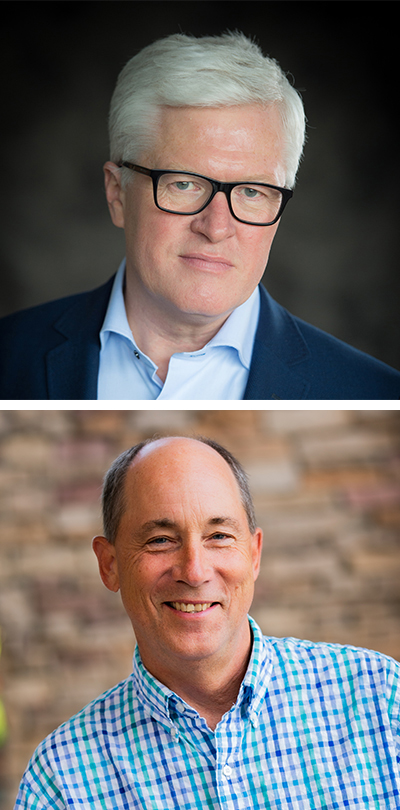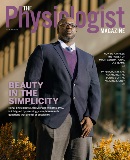APS Executive Director Scott Steen, CAE, FASAE, spoke with Ron Lynch, PhD, FAPS—professor of physiology, director of the Arizona Research Institute for Biomedical Imaging, and associate director for shared resources at the University of Arizona Cancer Center—about the evolution of physiology departments at R1 institutions and the lessons he’s learned at Arizona as their undergraduate program has grown from approximately 40 to more than 2,000 students each year.

STEEN: Taking your experience and looking more broadly, how do you think perceptions of physiology have evolved generally within
academia, particularly at larger R1 institutions?
LYNCH: Very difficult question, Scott. The evolution is that everybody’s a physiologist. Not trained as one, but everything has to have a physiological context to it.
Translational, right? So, even people who are working at the very basic level have to translate that into a clinical aspect, which in most cases means physiology or pathophysiology.
Now, I think this is where the discipline really plays a role. You can’t just think about the human body as a single organ. And many people who consider themselves physiologists are translational people. Really, what they do is they pick an organ and they try to figure out what’s going on and how they can make things better, or modulate organ function. But, in the end, I think the immune system—and the interactions of the immune system with other organ systems—shows us dramatically how one needs to think about the body as a single entity, built up of these different organ systems. That’s physiology. And I think a lot of medical people who come toward us have a much better appreciation for that.
I think even people like me—I’m an imaging person for the most part—bring a lot to the table when I have these discussions because I am asking questions about holistic types of things, as opposed to really dissecting down to the basic biophysical and molecular kinds of questions, which I've been trained to ask.
STEEN: Do you think that understanding of integrative physiology has declined within the discipline? I mean, you look at APS members and many of them see themselves as being specialists, as being cardiovascular researchers and physiologists or renal researchers and physiologists. Has that specialization taken something away from the perception of the discipline?
LYNCH: I don’t think so. As a matter of fact, I think on the surface what you’re really talking about is the kind of research. So, when we go to Experimental Biology (EB) or APS meetings, we tend to gravitate to the people who are working in our field, and that’s important. But that doesn’t mean that we don’t go to other sections and see the
work of other people. That’s the integration I’m talking about.
Naturally, you’re going to want to get all the information you can about the area of research you’re involved in and meet the people who are important to you to get your grants, to give you feedback on the kind of work you’re doing. But in fact, it’s the integration between those sections that is really important. And I think we do that all the time. I think that’s what those big meetings are best for.
STEEN: As we develop our new annual meeting so much of it is about a really renewed focus on that integrative aspect—on big topics that are cross-disciplinary and cross-sectional.
LYNCH: I was the APS Joint Program Committee chair for EB for six years. And one of the things that I really pushed for were the interdisciplinary translational kinds of symposia—they were called cross-sectional at the time. Those are some of the best things that we put on, where you had people from multiple sections giving talks on a particular, usually disease-related, problem that brought people across the board into those rooms. Those were exceptional. I thought those were the best things at the meeting.
STEEN: What do you see as the current opportunities and threats to the discipline? And maybe to APS as an organization representing the discipline?
LYNCH: I think the threats are related
to what I would consider the curriculum within the medical college. So now, we’re talking at the medical school level, where most colleges have gone to organ system and away from a disciplinary course so that anybody can teach any section of physiology.
And sometimes it’s not done as well as it should be. I think we lose disciplinary control of the information that’s being put out there. I’ve seen that. I think we’re getting a little better at it, but I think that’s definitely
a threat.
Now, I think there are a lot of opportunities within that. The first one is the undergraduate level, again, because this is being shifted. There’s a huge opportunity to get our foot in the door. And often, we’re seeing we’re a college of medicine undergraduate program; students are really attracted to that, and that’s why we have such a large undergraduate program.
I think that would generally be across the board if these things could be offered. But even within the medical school, being a discipline director, being able to really get back into more of an overview of what physiology is and put the discipline in the curriculum in a strong way is important. I’ve seen our medical school curriculum evolve over time where they understand the need for somebody to oversee physiology and what physiology curriculum’s being put into the medical school curriculum, even as it’s being limited to a certain extent.
STEEN: I’ve heard many members at other institutions refer to Arizona as a model. If there was one thing or a few things that other institutions could learn from Arizona, what would they be?
LYNCH: Well, the lessons are being developed. We are learning a lot on the fly. It’s very difficult to balance the research mission and a large teaching mission. If there’s anything that we can contribute, it’s that we are continuing to evolve in that regard. You need to nurture both. And one of the things that drives the undergraduate major is tuition dollars. When you have 2,000 students in your major, there’s a lot of resources coming for that. That can skew the perception of the department and also where the resources
go when a new person needs to be hired or a new course needs to be opened. Maybe you need to be supporting a junior faculty member as well. Where do those resources go? I think it’s really important for the research faculty, the tenure-track faculty,
to have a real say in how that research program runs.
This article was originally published in the July 2022 issue of The Physiologist Magazine.
“I think this is where the discipline really plays a role. You can’t just think about the human body as a single organ. And many people who consider themselves physiologists are translational people.”
Ron Lynch, PhD, FAPS
Watch the Full Conversation
The Physiologist Magazine
Read the Latest Issue
Don’t miss out on the latest topics in science and research.
View the Issue Archive
Catch up on all the issues of The Physiologist Magazine.
Contact Us
For questions, comments or to share your story ideas, email us or call 301.634.7314.


